10 Strength-Training Exercises To Shrink Your ‘Apron Belly’

Do you have a somewhat stubborn, saggy abdominal area? If you’ve lost weight or gone through pregnancy, it’s quite possible you do. There’s even a name for it: “apron belly.”
A little bit of fat does a lot of good in our bodies—especially if it’s located in exactly the right places. It helps to keep us warm in winter and stores energy for later use. It’s involved in some important chemical reactions as well. A shapely little bit of fat produces the hormone leptin, which travels to the hypothalamus, the part of the brain that controls appetite, and flicks the switch that tells us to stop eating. It also produces adiponectin, another hormone that helps regulate the metabolism of lipids and blood sugar. In fact, in a study published in the journal Cell Metabolism, researchers reported that subcutaneous fat in your hips and thighs is associated with reduced insulin levels and increased insulin sensitivity (meaning that it actually protects against diabetes). People who are “pear-shaped” and store fat in their hips and thighs also tend to have higher HDL cholesterol and lower triglycerides.
But biologically, there’s an enormous difference between subcutaneous fat—the stuff that’s right below your skin, the stuff that makes up love handles and the like—and visceral fat, which is inside your abdominal wall, wrapped around your internal organs. The easiest way to tell the difference might be this: subcutaneous fat jiggles, but visceral fat doesn’t. Subcutaneous fat is fat you can pinch; visceral fat is the solid stuff that makes your gut stick out.
So listen up, because we spoke to an expert who came up with five top strength-training exercises you can do to get rid of your “apron belly.”
What Is an Apron Belly?

Let’s learn exactly what an apron belly—also known as a “panniculus”—is. We spoke with Mike Bohl, MD, MPH, ALM, who describes this condition as an extra layer of fat that hangs over the waistline from the belly.
“The two main causes of developing an apron belly are pregnancy and weight gain,” says Dr. Bohl. “Rapid weight loss can also cause a panniculus to form because the skin might not retract as quickly as the fat was lost, so the excess skin hangs down from the abdomen.”
How Can Strength Training Help You Get Rid of an Apron Belly?
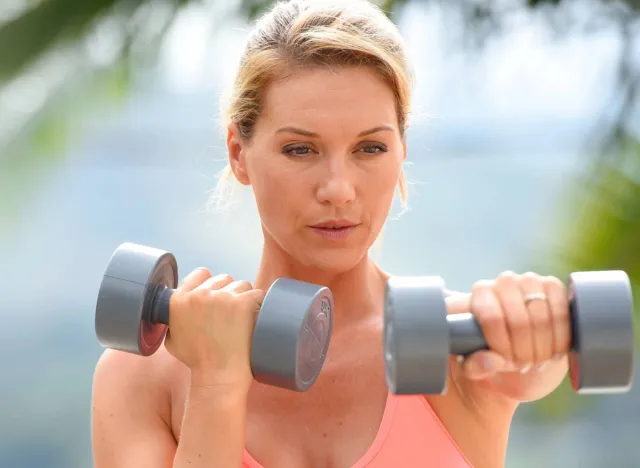
If you have an apron belly, your first thought may be, “Okay, I will exercise and lose weight in that area.” Unfortunately, it’s not possible to target weight loss in one specific area of your body—which is known as “spot reduction.” Instead, weight loss occurs throughout your entire body, not just in one area. Hence, you can’t zone in on exercises specifically addressing an apron belly, but you can lose body fat all over, including your belly.
“Exercises that cause you to burn more calories than you consume in a day will help you lose weight overall, which can eventually reduce an ‘apron belly,’” Dr. Bohl points out. “In some cases, an apron belly may be able to go away completely on its own after the fat is lost and the skin is able to retract. However, in some cases, the excess skin doesn’t retract, and a surgery called a panniculectomy can be done to remove it.”
Since losing weight overall is essential to shrinking your apron belly, strength-training exercises that burn the most calories are the most efficient.
Dr. Bohl recommends, “This can generally be done by working out larger muscle groups or by working out several muscle groups [simultaneously]. Cardio exercise can also facilitate weight loss, and it’s important to follow a diet as well so you [consume] fewer calories than you burn.”
Creating a calorie deficit is key here, along with consistency. You can reach your goal before you know it!
These Are the Best Exercises To Get Rid of an Apron Belly:
Here are the strength-training exercises Dr. Bohl suggests adding to your routine. Doing them regularly will give many muscle groups a solid workout simultaneously and can help you get rid of your apron belly for good.
1. Pushups
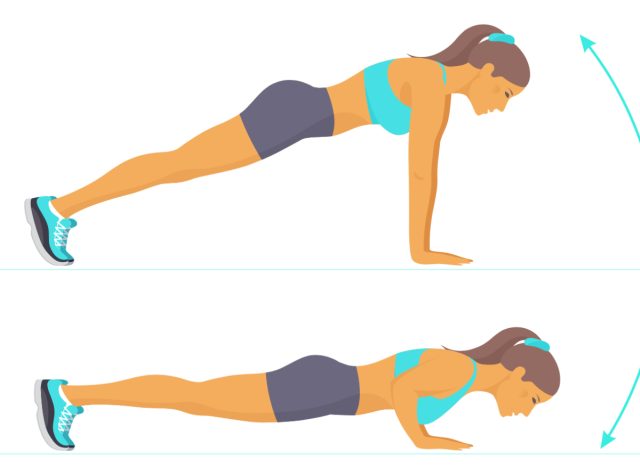
This classic exercise targets the upper body but also requires you to contract muscles throughout your body.
- Begin in a high plank with your hands below your shoulders. Keep your feet hip-width distance apart.
- Bring your belly button inward and maintain a tight core.
- Lower your chest toward the ground so that it’s almost touching.
- Push away from the floor with your hands flat until your arms are straight.
RELATED: Melt Belly Fat With This 30-Day, Low-Intensity Workout
2. Pull-ups
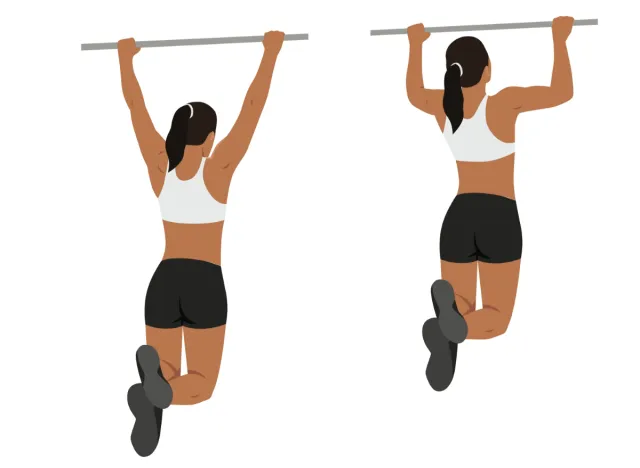
Pull-ups also target the upper body, including many muscles in your back and your arms.
- Hold onto a pull-up bar.
- Pull yourself up until your chin goes slightly above the bar.
- With control, descend until both arms are totally straight.
3. Squats
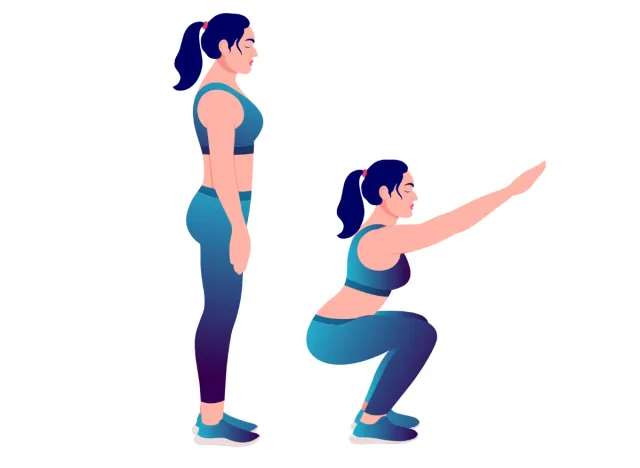
Squats, in addition to lunges and deadlifts, work the large muscles in your legs and glutes.
- Place your feet a bit wider than hip-width distance apart.
- Hinge your hips back, keep your chest tall, and descend into a squat until your thighs are parallel to the floor.
- Push into your heels to rise back up to standing.
4. Deadlifts
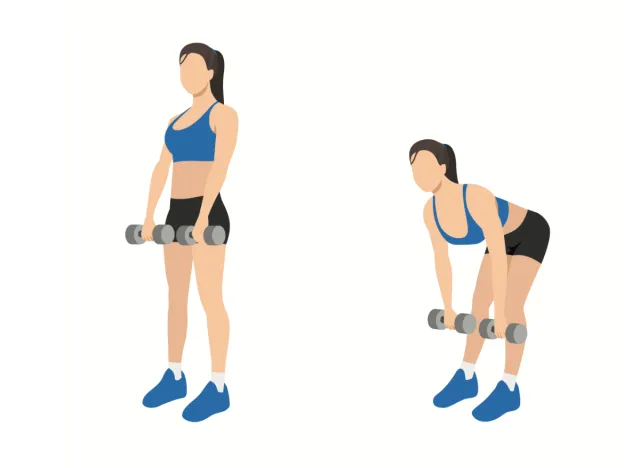
There are various ways to perform deadlifts. You can work with a kettlebell, barbell, or set of dumbbells.
- Stand tall with a dumbbell in each hand, palms facing in.
- Keep your core tight and your spine neutral to establish some tension.
- Hinge your hips back, and bring the dumbbells down your legs toward the floor.
- Once you reach the bottom of the movement, press through your feet to return to standing.
5. Lunges
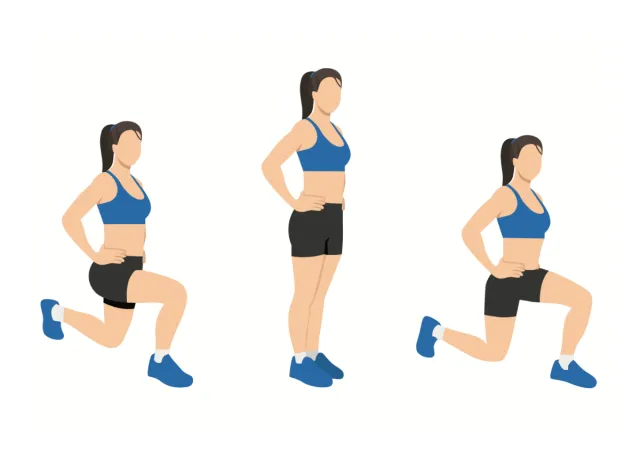
When it comes to lunges, you can do so many variations, from forward lunges to jumping lunges to reverse lunges to lateral lunges.
- If you’re doing a forward lunge, bring one leg forward.
- Descend into a lunge, lowering your back leg toward the floor.
- Make sure to maintain solid form and posture throughout this exercise.
- Press through your heel to rise back up.
- Bring your back leg forward to complete a lunge on your other side.
Now, Amp Up Your “Apron Belly” Workout With The Zero Belly Medicine Ball Workout
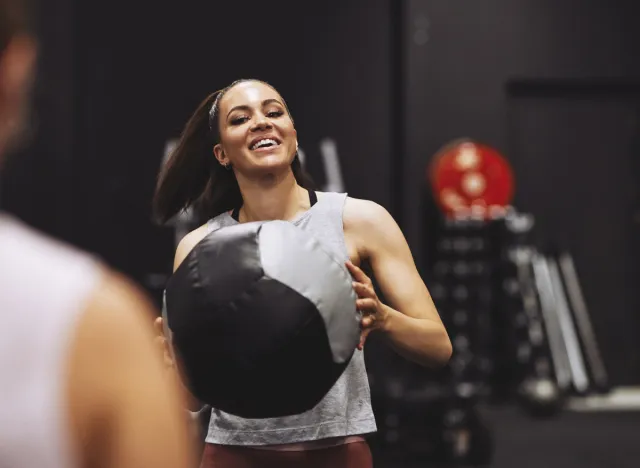
The medicine ball may well be the single oldest exercise tool known to man, with evidence of the ancient Greeks and Persians using sand-filled animal bladders some three thousand years ago. Over the ensuing millennia the ball has seen its peaks and valleys in popularity, but right now it’s getting its moment in the spotlight—again, because it’s so effective at working the core. There are two kinds of medicine balls: the kind made of soft material filled with sand or stuffed and weighted, and the newer rubber balls, some of which have a pair of molded handles. Either will work for the following workout, which should be performed four consecutive times with three minutes of rest between circuits.
The Zero Belly Medicine Ball Workout
Exercise
Walking Lunge 20 steps
Plank 20 sec
Floor Slam 10 times
Alternating Push-up 5 each side
Wall Sit 20 sec
1. Walking Lunge
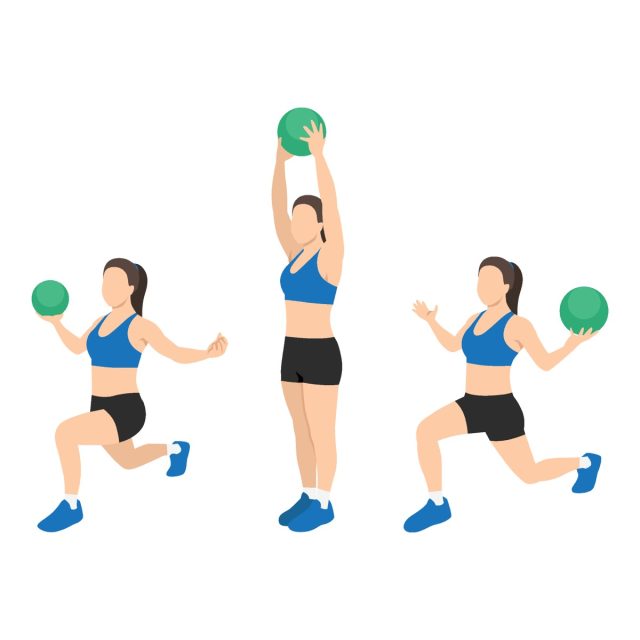
Hold a medicine ball with both hands at chest level. Take a large step forward and lower yourself until your rear knee brushes the floor. Your front lower leg should be perpendicular to the floor. Rise up as you take another step forward with your rear leg. Each step should be long, controlled, and deliberate.
2. Plank
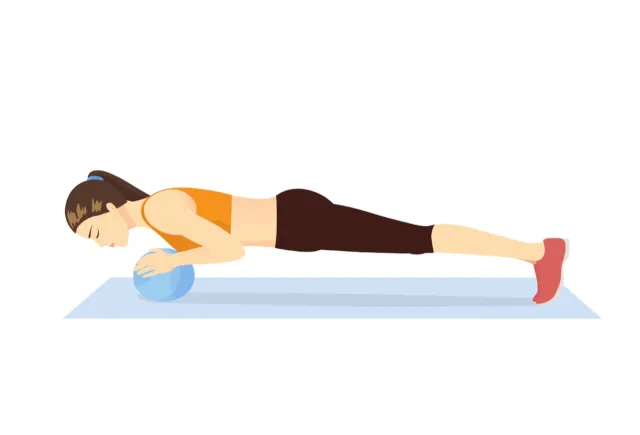
Assume a standard plank position with your forearms resting atop a medicine ball. Make sure to keep your back straight and glutes engaged throughout the prescribed time.
3. Floor Slam
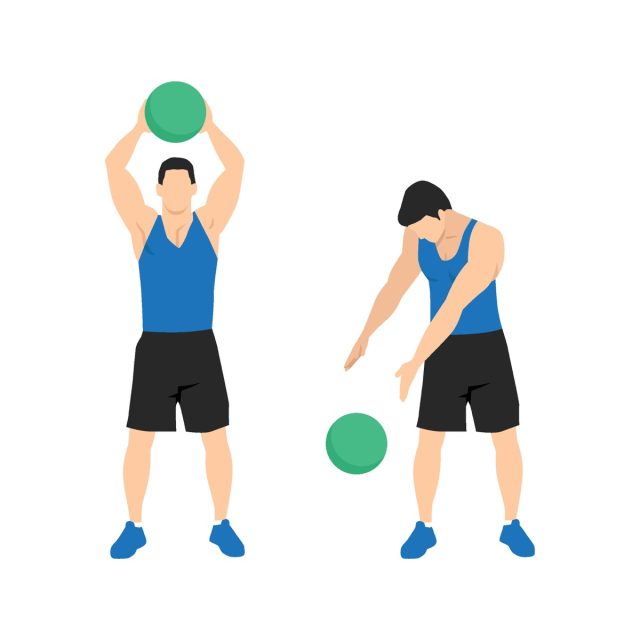
Lift a medicine ball overhead and then forcefully throw it down to the floor a foot or two in front of you. Pick the ball back up and repeat.
4. Alternating Push-up
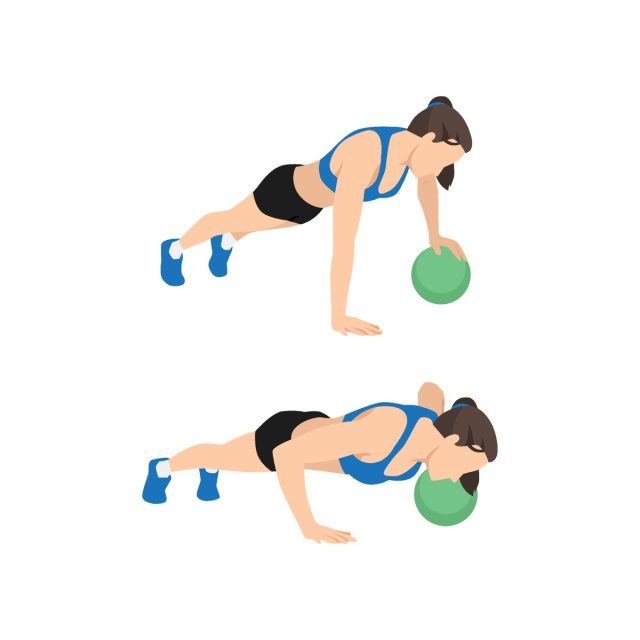
Assume a push-up position, but with one hand atop a medicine ball. Perform a push-up. From the raised position, take the elevated hand off the ball and roll the ball over to your other hand, then move the elevated hand down to the floor. Do another push-up, this time with the opposite hand elevated. Double up on your rep count as you complete each rep per side, so the count will be 1, 1, 2, 2, 3, 3, and so on.
5. Wall Sit
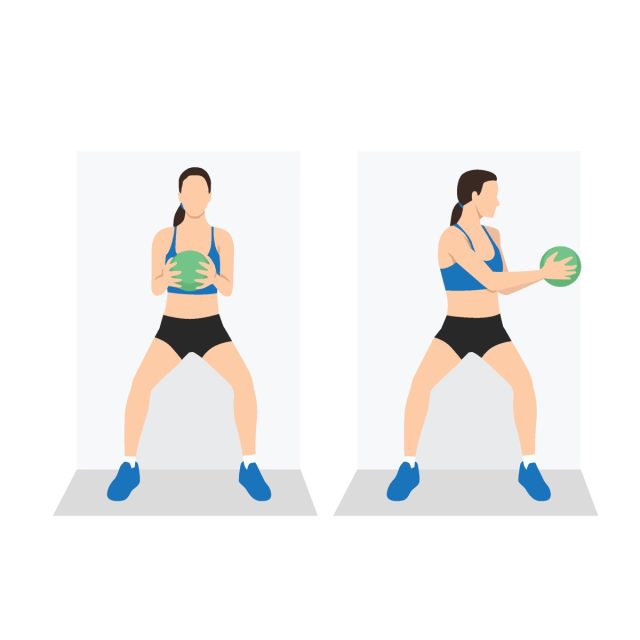
Stand with your back facing a wall, with a distance of about a foot between the wall and your heels. Pick up a medicine ball and hold it at chest level. Lean back until your back is resting against the wall, then slide down the wall until your upper legs are parallel with the floor. Your lower legs should be perpendicular to the floor. Hold this position for the prescribed time.









